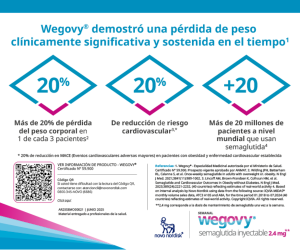¿Cuánto tiene la prediabetes de pre-diabetes?
DOI:
https://doi.org/10.47196/diab.v49i2.196Palabras clave:
diabetes, prediabetesResumen
Desde hace más de medio siglo los niveles glucémicos situados entre valores normales y aquellos que permiten diagnosticar diabetes mellitus han recibido nombres cambiantes. En este sentido, a fines de la década de 1950 Conn y Fajans hablaron de diabetes química y diabetes latente, dejando el término prediabetes para aquellos individuos con glucemias en todo normales pero que tenían antecedentes familiares y/o algún otro factor de riesgo para desarrollar diabetes mellitus. En 1965, el Comité de Expertos de la OMSrecomendó el uso del término “borderline diabetes”, y en 1979 el National Diabetes Data Group definió la categoría de tolerancia alterada a la glucosa (“impaired glucose tolerance”, IGT o TAG), incorporada un año después en la clasificación de la OMS.
Citas
Meador CK. The last well person. N. Engl. J. Med. 1994; 330: 440-1.
Romains J. Knock o El triunfo de la Medicina. Madrid: Editorial Bruño, 1989.
Fajans SS, Conn JW. Prediabetes, subclinical diabetes and latent clinical diabetes: interpretation, diagnosis and treatment. En: On the nature and treatment of diabetes. Leibel BS. Wrenshall GS (editores). Excerpta Medica Int. Cong. Series 84, New York 1965; 641-65.
World Health Organization: Diabetes Mellitus: Report of a WHO Expert Committee, World Health Organisation, Geneva, 1965 (Tech. Rep. Ser., Nº 310).
National Diabetes Data Group. Classification and diagnosis of diabetes mellitus and other categories of glucose intolerance. Diabetes 1979; 28: 1039-1057.
World Health Organization: Expert Committee on Diabetes Mellitus, World Health Organisation, Geneva, 1980 (Tech. Rep. Ser., Nº 646).
Qureshi AI, Giles WH, Croft JB. Impaired glucose tolerance and the likelihood of nonfatal stroke and myocardial infarction: the Third National Health and Nutrition Examination Survey Stroke 1998; 29:1329-32.
The Expert Committee on the Diagnosis and Classification of Diabetes Mellitus. Report of the Expert Committee on the diagnosis and classification of diabetes mellitus, Diabetes Care 1997; 20: 1183-1197.
World Health Organization. Definition, Diagnosis and Classification of Diabetes Mellitus and its Complications: Report of a WHO Consultation. Part 1: Diagnosis and Classification of Diabetes Mellitus, World Health Organisation, Geneva, 1999.
The Expert Committee on the Diagnosis and Classification of Diabetes Mellitus. Follow-up Report on the Diagnosis of Diabetes Mellitus, Diabetes Care 2003; 26: 3160–3167.
Borch-Johnsen K, Colagiuri S, Balkau B, et al. Creating a pandemic of prediabetes: the proposed new diagnostic criteria for impaired fasting glycaemia. Diabetologia 2004; 47:1396-1402
Forouhi NG, Balkau B, Borch-Johnsen K, et al. The threshold for diagnosing impaired fasting glucose: a position statement by the european diabetes epidemiology group. Diabetologia 2006; 49: 822-827.
World Health Organization. Definition and diagnosis of diabetes mellitus and intermediate hyperglycemia. World Health Organisation, Geneva, 2006.
American Diabetes Association. Diagnosis and classification of diabetes mellitus. Diabetes Care. 2011; 34 (Suppl 1):S62–S69.
Bersoux S, Cook CB, Wu Q, et al. Hemoglobin a1c testing alone does not sufficiently identify patients with prediabetes. Am. J. Clin. Pathol. 2011; 135: 674-677.
Xu Y, Wang L, He J, et al. Prevalence and control of diabetes in Chinese adults. JAMA 2013; 310:948-58.
James C, Bullard KM, Rolka DB, et al. Implications of alternative definitions of pre-diabetes for prevalence in US adults. Diabetes Care 2011;34: 387-91.
Gabir M, Hanson R, Dabelea D, et al. Plasma glucose and prediction of microvacular disease and mortality: evaluation of 1997 American Diabetes Association and 1999 WHO criteria for diagnosis of diabetes. Diabetes Care 2000; 23: 1113-18.
Sumner C, Sheth S, Griffin J, Cornblath D, et al. The spectrum of neuropathy in diabetes and IGT. Neurology 2003; 60: 108-11.
Gagliardino JJ, de Sereday, M, González C, y cols. Conclusiones de la reunión de consenso sobre criterio diagnóstico de la glucemia de ayunas alterada de la Sociedad Argentina de Diabetes. Rev. Soc. Arg. de Diabetes 2007; 41: 95-104.
Descargas
Publicado
Número
Sección
Licencia

Esta obra está bajo una licencia internacional Creative Commons Atribución-NoComercial-SinDerivadas 4.0.
Dirección Nacional de Derecho de Autor, Exp. N° 5.333.129. Instituto Nacional de la Propiedad Industrial, Marca «Revista de la Sociedad Argentina de Diabetes - Asociación Civil» N° de concesión 2.605.405 y N° de disposición 1.404/13.
La Revista de la SAD está licenciada bajo Licencia Creative Commons Atribución – No Comercial – Sin Obra Derivada 4.0 Internacional.
Por otra parte, la Revista SAD permite que los autores mantengan los derechos de autor sin restricciones.




























